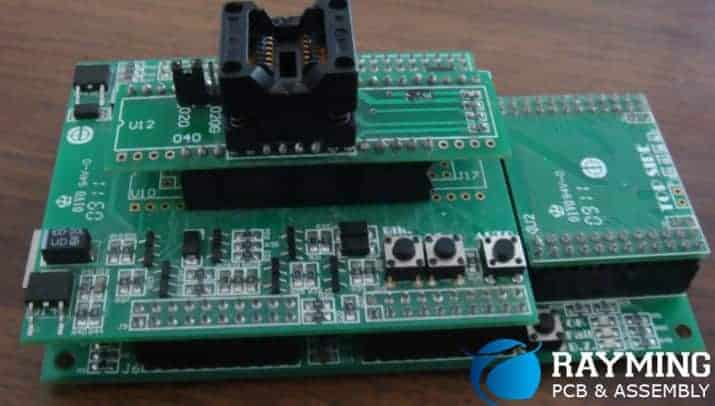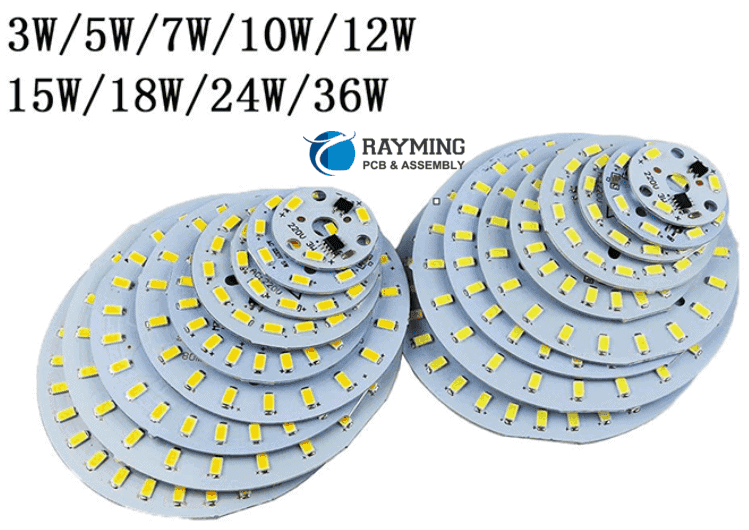What is a Turnkey PCB Solution?
A turnkey printed circuit board (PCB) solution refers to a PCB product or service that is fully completed and ready to be used out of the box. Turnkey PCB solutions allow companies to hand off the design, layout, fabrication, assembly, and testing of their boards to an expert PCB manufacturing partner. This saves them time and money compared to developing PCBs completely in-house.
Some key things turnkey PCB solutions provide:
- Complete PCB design, layout, and documentation
- Circuit board fabrication and quality testing
- Part sourcing, placement, and soldering
- Full assembly and post-assembly testing
- Ready-to-use finished circuit boards
Turnkey PCB solutions are ideal for companies without extensive electrical engineering and PCB fabrication expertise. They allow you to bypass the complications of PCB development and go straight to finished boards.
Benefits of Using a Turnkey PCB Solution
Here are some of the main benefits of using a turnkey PCB solution:
1. Saves Time and Speeds Time-to-Market
The biggest benefit of turnkey PCB solutions is the massive time savings. A good PCB manufacturing partner handles the entire development process for you.
This significantly shortens your time-to-market. You don’t have to spend months designing, laying out, and testing boards in-house. Just provide your partner with design files or product requirements and approved prototypes will arrive in weeks.
2. Reduces Development and Production Costs
When using a turnkey PCB solution, you essentially outsource your PCB fabrication, assembly, and testing needs. This eliminates the high capital costs of creating these capabilities in-house.
Turnkey solutions also improve economies of scale. An established PCB company aggregates orders from many customers. This lowers their costs for materials, labor, and manufacturing equipment. Many of these savings get passed on to you.
3. Access to Advanced Technology and Expertise
A good PCB solutions partner brings world-class technology and expertise to the table. For example, they utilize cutting-edge PCB layout software, automated assembly lines, and advanced testing systems.
Their electrical engineers and technicians also offer years of experience designing, assembling, and qualifying PCBs. This expertise is difficult and expensive to develop internally.
4. High Quality and Reliability
Reputable PCB solution providers adhere to very high quality and reliability standards. They use rigorous processes to ensure your boards are fabricated, assembled, and tested to perfection.
Stringent quality control and end-of-line testing verifies your PCBs will function flawlessly in finished products. This level of quality is hard to match without substantial internal investments.
5. Flexibility and Scalability
Your PCB needs likely change over time as products evolve or order volumes fluctuate. A good turnkey partner accommodates your evolving requirements.
For example, they can scale production up or down, adapt to design changes, and tweak quality procedures as needed. This flexibility is much harder to achieve using internal resources alone.
Turnkey PCB Design Considerations
If you plan to utilize a turnkey PCB solution, here are some important design considerations:
Component Selection and Availability
Select standard, readily available components whenever possible. Avoid highly specialized or proprietary parts that will be difficult for your PCB partner to source. Provide them with part numbers, suppliers, data sheets, and sourcing instructions.
Design for Manufacturing and Assembly
Follow PCB design for manufacturing (DFM) and design for assembly (DFA) guidelines to avoid fabrication and assembly issues. For example, allow sufficient spacing between components and design appropriately sized pads and traces.
Documentation
Provide your PCB partner with comprehensive documentation about your product’s functions, components, performance requirements, and other details critical to proper PCB implementation.
Test Points
Incorporate sufficient test points so your partner can fully validate assembled board operation and performance. Test points facilitate quality control and help identify any issues.
Communications
Maintain regular communication with your PCB partner during the design and development process. Alert them to any specification changes and get their feedback to avoid issues.
How to Choose the Right Turnkey PCB Solutions Partner

Selecting the right PCB solutions company is critical to achieving success. Here are some factors to consider in your decision process:
Technology and Capabilities
Look for partners with advanced PCB fabrication and assembly technology, testing capabilities, and equipment. They should be able to accommodate your technical requirements with their production infrastructure.
Experience and Expertise
Choose companies with many years of experience designing, fabricating, and assembling PCBs, including those similar to yours. Their expertise will avoid rookie mistakes and ensure high quality.
Quality Systems
Rigorous quality control systems and end-of-line testing are essential. Make sure potential partners adhere to industry quality standards. Ask about their inspection procedures, defect rates, and corrective practices.
Customer Service
You want a partner that provides exceptional customer service. How responsive are they? Will they assign you an engineering contact? Do they offer design review and feedback? How flexible are they to your needs?
Location
Optimal turnkey PCB partners have production facilities near you. This simplifies communication, allows site visits, avoids long shipping times, and meets regulatory requirements. However, some overseas companies can still offer high-quality solutions.
Pricing and Delivery
Balance costs with production timelines that meet your schedule requirements. Make sure to get formal quotes accounting for order volumes, production time, special requirements, and other cost drivers.
Reputation
Select companies with solid reputations earned over years of satisfied PCB production customers. Check their client lists and read reviews and testimonials. A strong reputation indicates a reliable partner.
The PCB Production and Assembly Process
Here is a high-level overview of the typical turnkey PCB production process:
1. Design Finalization
You provide the PCB design files and specifications or your requirements. Your partner reviews the design for manufacturability and component sourcing. Design changes are incorporated to optimize fabrication and assembly.
2. Prototyping
Low-volume prototypes are produced to test the design. Feedback from prototype evaluation helps refine the design to solve any issues before full production.
3. Fabrication
The PCB fabrication process generates bare printed circuit boards. It involves creating the physical board layers and electrical interconnects using processes like lithography, chemical etching, drilling, and lamination.
4. Component Sourcing
Components are sourced from suppliers based on available stock, lead times, and pricing. Long lead items are prioritized to avoid production delays.
5. Assembly
Components are mechanically and/or soldered onto the boards. This usually involves pick-and-place machines, solder paste, wave soldering systems, cleaning, and inspection.
6. Testing
Finished boards undergo comprehensive functional and performance testing. Parameters like continuity, voltage, current, and oscillation are validated against your specifications. Debugging identifies any issues.
7. Delivery
Once the boards pass all tests, documentation is compiled, final payments collected, and the boards shipped. Production often takes 4-8 weeks from design files to shipment.
Applications of Turnkey PCBs

Here are some of the many products and applications that benefit from turnkey printed circuit board solutions:
- Consumer electronics – Smartphones, tablets, home appliances, gaming systems
- Computers – Laptops, desktops, servers
- Automotive – Engine control units, infotainment systems
- Medical devices – Diagnostic equipment, surgical tools, implants
- Industrial equipment – Sensors, robotics, motors, pumps
- Wireless communications – Cell towers, WiFi routers, private networks
- Aerospace and defense – Avionics, guidance systems, satellites
Turnkey PCB production is useful across nearly every industry that relies on electronic devices and systems. The specialized skills of a PCB solutions partner boosts quality while minimizing internal development costs and risks.
Frequently Asked Questions
What are the steps in creating a turnkey PCB?
The main steps are:
- Finalizing schematic design and layout
- Sourcing required components
- Fabricating bare PCBs
- Assembling boards by soldering components
- Testing assembled boards
- Delivering finished boards
How long does turnkey PCB production usually take?
With an experienced partner, turnkey PCB production typically takes 4-8 weeks from design completion to delivery. Lower volumes can sometimes be produced faster.
What are some key turnkey PCB design considerations?
Some key considerations are: standard component selection, design for manufacturing/assembly, complete documentation, adequate test points, and regular communications with your PCB partner.
What quality standards should a good turnkey PCB partner meet?
They should meet key industry quality standards like ISO 9001. Rigorous quality control, inspection, and end-of-line testing capabilities are also essential.
How can I evaluate potential turnkey PCB partners?
Evaluate their experience, technology capabilities, quality systems, customer service, costs, production time, location, and client reputation. Site visits are also highly recommended.



0 Comments